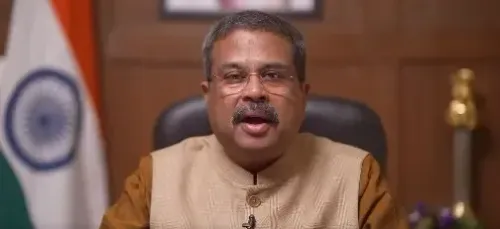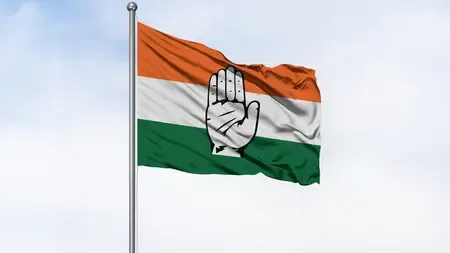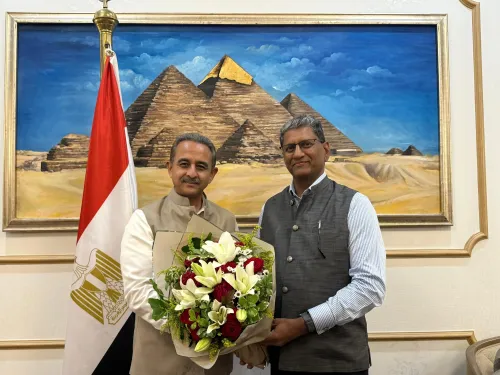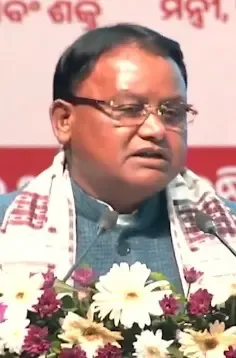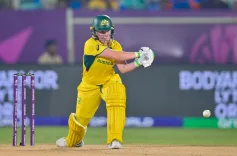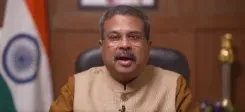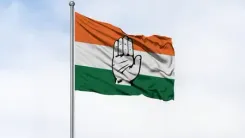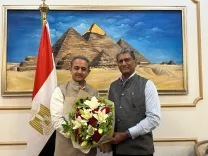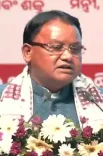Is a New Era in US-India Relations on the Horizon with the New US Ambassador?
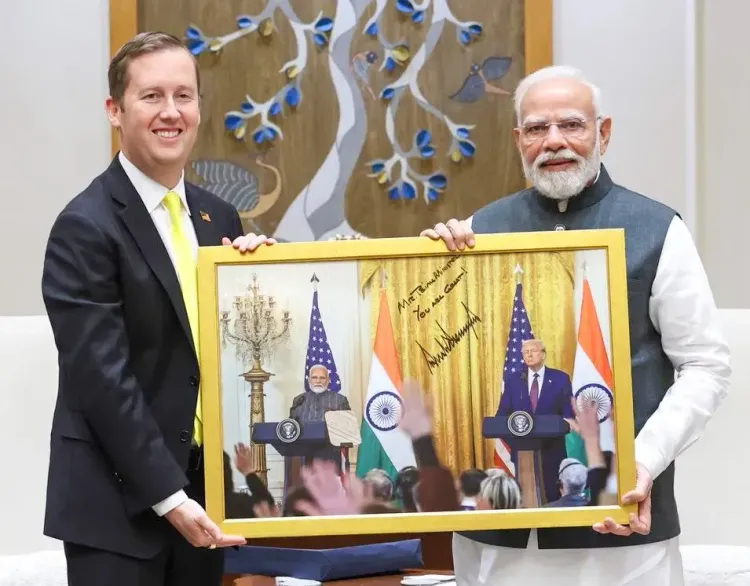
Synopsis
Key Takeaways
- Sergio Gor is the youngest U.S. ambassador to India.
- His swift meetings indicate a commitment to enhancing bilateral relations.
- Discussions focused on defense, trade, and technology.
- Critical minerals are essential for green energy ambitions.
- Challenges like tariffs and geopolitical issues could impact relations.
New Delhi, Oct 11 (NationPress) In a fast-paced six-day introduction to his official role, Sergio Gor, a 38-year-old close associate of Donald Trump, who has just been confirmed as the youngest ambassador to India in U.S. history, is already energizing the pivotal bilateral relationship between the two nations.
Arriving from Washington on October 9 with Deputy Secretary for Management and Resources Michael J. Rigas, Gor’s schedule culminated in a remarkable evening discussion with Prime Minister Narendra Modi, reflecting a clear intent to realign U.S.-India relations in the midst of global uncertainties.
Gor, confirmed by the Senate on October 8 as part of a substantial 107-nominee bloc, wasted no time in his approach.
His day was packed with crucial meetings, including a productive dialogue with Foreign Secretary Vikram Misri about the shared objectives of the Comprehensive Global Strategic Partnership, a significant conversation with External Affairs Minister S. Jaishankar who praised the relationship's global importance and wished Gor well in his dual role as Special Envoy for South and Central Asia, and a strategic overview with National Security Advisor Ajit Doval.
In an official statement, Sergio Gor remarked: "Good evening, It’s an honor and a privilege to be here today. I arrived in New Delhi from Washington early this morning, and we hit the ground running. We had a series of productive meetings, including one with Foreign Secretary Misri, External Affairs Minister Dr. Jaishankar, and National Security Advisor Doval. We concluded with an incredible meeting with Prime Minister Modi, discussing bilateral topics such as defense, trade, and technology, and the significance of critical minerals for our nations.
"The U.S. deeply values its relationship with India, and under the strong leadership of President Donald J. Trump and Prime Minister Modi, I am optimistic about our future together. President Trump considers Prime Minister Modi a close personal friend. Just before my departure for New Delhi, they had an extraordinary phone conversation, which promises to continue in the coming weeks and months. It's an honor to serve as President Trump’s Ambassador to India; I eagerly anticipate deepening the relationship between our two nations. Thank you very much."
The pinnacle of Gor's visit took place at PM Modi’s residence, where discussions included defense interoperability, expanding trade agreements, technological collaboration, and the crucial issue of critical minerals, vital for both countries' green energy strategies and supply chain stability.
Although Gor's visit was not for credential presentation, PM Modi gifted him a signed photo from their previous White House meeting, inscribed by President Trump: "Mr. Prime Minister, you are great." This gesture symbolizes the strong personal bond that Trump and Modi have nurtured since the 2017 "Howdy Modi" event.
"President Trump regards Prime Minister Modi as a great personal friend," Gor reiterated post-meeting, recalling a pre-departure phone call between the leaders that hints at ongoing high-level engagement.
On social media platform X, Gor expressed: "An honor to be with PM Narendra Modi this evening. Our relationship with India will only strengthen in the upcoming months!"
PM Modi responded positively: "Glad to welcome Mr. Sergio Gor... I'm confident that his term will further enhance the India–US Comprehensive Global Strategic Partnership."
This young diplomat's rise is noteworthy. A prodigy born in the Soviet Union who became a naturalized American, Gor previously served as Trump’s Director of the White House Presidential Personnel Office, overseeing the vetting of over 4,000 appointees with remarkable efficiency, earning him the title of "the most powerful man you've never heard of."
His advisory role with MAGA Inc. and leadership of the Right for America PAC sharpened his skills in ideological alignment, which he now applies to diplomacy.
His confirmation underscores the strategic importance of the India post in Trump's Asia strategy. Gor's arrival signals a potential Trump 2.0 foreign policy focused on securing transactional successes while being mindful of geopolitical challenges. The U.S. Embassy has asserted its commitment to "promote a safer, stronger, and more prosperous Indo-Pacific," indicating a strategy to counter China's assertiveness through QUAD enhancements and iCET tech corridors. However, challenges persist; Trump's tariff threats and H1B visa increases might strain the $200 billion bilateral trade, disproportionately affecting Indian IT exports and the 4.5 million Indian-Americans.
Gor's youth—contrasting with the seasoned veterans of the past—indicates agility in navigating these tensions, possibly facilitating a "mini-deal" on minerals to avoid broader protectionism. Optimism prevails, as Gor stated: "The U.S. values its relationship with India... I am optimistic about the days ahead."
In a time of uncertainty, from the ripples of Ukraine to tensions in Taiwan, Gor's tenure could foster a "Modi-Trump 2.0" synergy, strengthening alliances while mitigating economic risks.
As Rigas and Gor prepare to leave on October 14, the envoy's parting words resonate; enhancing ties is not just rhetoric—it's the cornerstone of a multipolar order.

